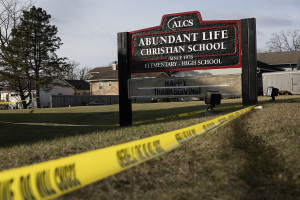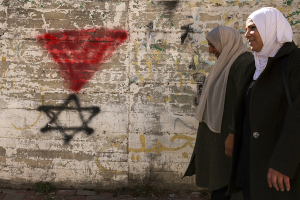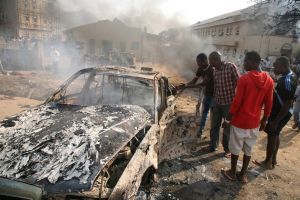Heat Wave Sizzles Midwest, South; Hitting East Coast Soon
Sizzling heat soars to 131 degrees
The brutal heat wave sizzling most of the United States this week is heading toward the East Coast starting Wednesday, bringing with it a possible heat index of more than 100 degrees, the National Weather Service said today.
This will be the first deadly heat wave to hit the Bay State this year.
Meteorologist Bill Deger said this week's severe heat wave is set to leave its mark in the record books, with numerous high temperature records in jeopardy as the blazing heat expands east through next weekend.
Dangerous levels of heat and humidity, topping at some 100 degrees, has scorched at least 14 states from the Dakotas to Texas and eastward into the Ohio Valley during the past week.
Forecasters with the National Weather Service said heat index values as high as 131 degrees were reported Sunday and excessive heat watches, warnings and heat advisories are in effect Monday and Tuesday for a large portion of the central U.S. Temperatures in many locations will exceed 90 degrees, but will feel like 100 to 110 degrees or higher with the high humidity factored in.
On Monday, heat indexes felt like 120 degrees in many places across the Plains and Midwest. More than 40 states topped 90 degrees.
Temperature records were tied or broken Monday across the Midwest, including Ankeny, Iowa, where the mercury hit 102 degrees.
Forecasters said that unless there is a dramatic change in weather conditions, the hot and humid weather could last until Thursday or Friday. By week's end, the mercury in the major cities could approach triple digits, the weather service says.
Senior Meteorologist Kristina Pydynowski with AccuWeather said the worst of the heat and humidity will be focused across the Plains and Mississippi Valley region through the first half of the week.
"The thing about this heat wave is you have the heat you have the humidity and you have no wind," said meteorologist Bernie Rayno.
By the end of the week, temperatures in the Northeast will reach 100 degrees and feel hotter, AccuWeather predicted. But a cold front moving into the northern Plains should give Montana, the Dakotas and Minnesota a bit of relief.
The soaring temperatures are taking its toll on many U.S. residents. Kansas City health authorities say they are investigating nine deaths that might be related to heat this year.
The health department said the suspected death is a man in his early 70s. The Kansas City Star reported that the city recorded a total of 10 heat-related deaths in the past three years.
The health department also said one-third of this year's heat-related deaths has been adults ages 18 to 44, with 28 percent age 65 and older. Nearly 10 percent of the illnesses have been in children age 4 and under.
In Louisiana, the Bossier Parish coroner also confirmed this week that an elderly woman was recovered from the Riverview Nursing Home in Bossier City.
Dr. John Chandler said her death is currently being labeled suspicious for heat related, but remains under investigation.
Why are Heat Waves so dangerous?
Heat kills by taxing the human body beyond its abilities. In a normal year, about 175 Americans succumb to the demands of summer heat. Among the large continental family of natural hazards, only the cold of winter - not lightning, hurricanes, tornadoes, floods, or earthquakes – takes a greater toll. In the 40-year period from 1936 through 1975, nearly 20,000 people were killed in the United States by the effects of heat and solar radiation. In the disastrous heat wave of 1980, more than 1,250 people died. And these are the direct casualties. No one can know how many more deaths are advanced by heat wave weather – how many diseased or aging hearts surrender that under better conditions would have continued functioning.
Source: FEMA





























